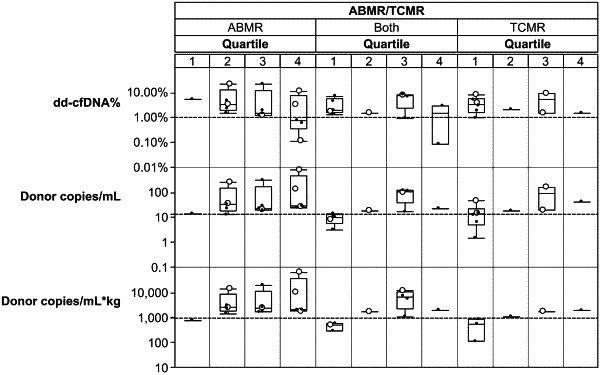| CPC C12Q 1/6869 (2013.01) [C12Q 1/6851 (2013.01); C12Q 1/6876 (2013.01)] | 19 Claims |

|
1. A method of preparing a preparation of amplified DNA from a blood sample of a transplant recipient useful for determining likelihood of transplant rejection, comprising:
(a) extracting DNA from the blood sample of the transplant recipient, wherein the DNA comprises donor-derived cell-free DNA and recipient-derived cell-free DNA;
(b) preparing a preparation of amplified DNA by performing targeted amplification at 200-50,000 target loci in a single reaction volume using 200-50,000 target-specific primer pairs to obtain amplification products, wherein the target loci comprise polymorphic loci and non-polymorphic loci, wherein the targeted amplification comprises an annealing step having a length of at least 10 minutes, and wherein each target-specific primer has a concentration of less than 20 nM;
(c) performing high-throughput sequencing on the amplification products to obtain a sequencing readout and quantifying an amount of donor-derived cell-free DNA and in the blood sample based on the sequencing readout;
wherein a cutoff threshold value of donor-derived cell-free DNA for the blood sample of the transplant recipient is scaled according to the amount of total cell-free DNA and on data of at least one of donor height or donor weight; and
wherein the likelihood of transplant rejection is determined based on comparing the amount of donor-derived cell-free DNA or a function thereof to the scaled cutoff threshold value.
|